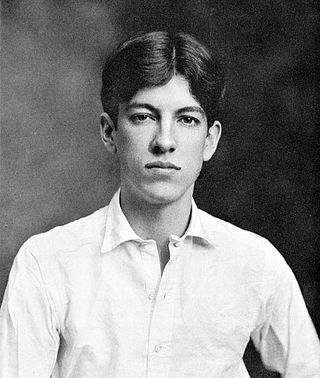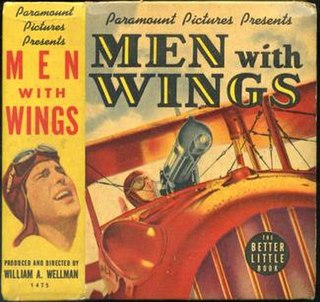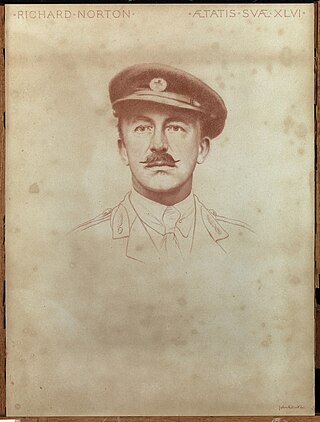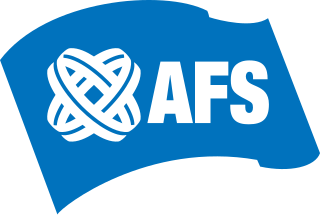
Edward Estlin Cummings, commonly known as e e cummings or E. E. Cummings, was an American poet, painter, essayist, author, and playwright. During World War I, he worked as an ambulance driver and was imprisoned in an internment camp, which provided the basis for his novel The Enormous Room in 1922. The following year he published his first collection of poetry, Tulips and Chimneys, which showed his early experiments with grammar and typography. He wrote four plays; HIM (1927) and Santa Claus: A Morality (1946) were most successful. He wrote EIMI (1933), a travelog of the Soviet Union, and delivered the Charles Eliot Norton Lectures in poetry, published as i—six nonlectures (1953). Fairy Tales (1965), a collection of short stories, was published posthumously.

Harry Crosby was an American heir, World War I veteran, bon vivant, poet, and publisher who for some epitomized the Lost Generation in American literature. He was the son of one of the richest banking families in New England, a Boston Brahmin, and the nephew of Jane Norton Grew, the wife of financier J. P. Morgan, Jr. As such, he was heir to a portion of a substantial family fortune. He was a volunteer in the American Field Service during World War I, and later served in the U.S. Ambulance Corps. He narrowly escaped with his life.

John Roderigo Dos Passos was an American novelist, most notable for his U.S.A. trilogy.

Robert Silliman Hillyer was an American poet and professor of English literature. He won a Pulitzer Prize for poetry in 1934.

James Laughlin was an American poet and literary book publisher who founded New Directions Publishing.

The Friends' Ambulance Unit (FAU) was a volunteer ambulance service, founded by individual members of the British Religious Society of Friends (Quakers), in line with their Peace Testimony. The FAU operated from 1914 to 1919, 1939 to 1946 and 1946 to 1959 in 25 countries. It was independent of the Quakers' organisation and chiefly staffed by registered conscientious objectors.

William Slater Brown was an American novelist, biographer, and translator of French literature. Most notably, he was a friend of the poet E. E. Cummings and is best known as the character "B." in Cumming's 1922 memoir/novel The Enormous Room.

Alan Seeger was an American war poet who fought and died in World War I during the Battle of the Somme, serving in the French Foreign Legion. Seeger was the brother of Elizabeth Seeger, a children's author and educator, and Charles Seeger, a noted American pacifist and musicologist; he was also the uncle of folk musicians Pete Seeger, Peggy Seeger, and Mike Seeger. He is lauded for the poem "I Have a Rendezvous with Death", a favorite of President John F. Kennedy. A statue representing him is on the monument in the Place des États-Unis, Paris, honoring those American citizens who volunteered to fight for the Third French Republic while their country was still neutral and lost their lives during the war. Seeger is sometimes called the "American Rupert Brooke".
Nationality words link to articles with information on the nation's poetry or literature.

La Ferté Macé is a commune in the Orne department, region of Normandy, northwestern France.

Hôpital Temporaire d'Arc-en-Barrois was an emergency evacuation hospital serving the French 3rd Army Corps during World War I. It was organised and staffed by British volunteers and served French soldiers.
Charles Howgate Guy was an American football player. He played college football for Dartmouth College and Washington & Jefferson College and professional football in the National Football League for five teams between 1920 and 1924. He was selected as an All-NFL player in 1923.
Captain Leonard Coombes Hammond was a World War I flying ace credited with six aerial victories.

Men with Wings is a 1938 American Technicolor war film, directed by William A. Wellman and starring Fred MacMurray, Ray Milland, and Louise Campbell. Donald O'Connor also has a small part as the younger version of MacMurray's character. The two would soon star in the film Sing You Sinners together along with Bing Crosby.

Richard Norton was an American fine art historian and archaeologist, specializing in classical antiquity, who was head of the American School of Classical Studies in Rome, and a director for the Boston Museum of Fine Art, and the Archaeological Institute of America before World War I. From October 1914 he was the organizer and head of the American Volunteer Motor Ambulance Corps, until its absorption by the American Army in September 1917. For his efforts he was awarded the Croix de Guerre and the Grand-Croix of the Legion of Honour by the French government.

Camp Crane was a World War I United States Army Ambulance Service (USAAS) training camp, located in Allentown, Pennsylvania. Its mission was to train ambulance drivers to evacuate casualties on the Western Front in France. It was named for Brigadier General Charles Henry Crane, surgeon general of the Army in 1882–83.

AFS Intercultural Programs is an international youth exchange organization. It consists of over 50 independent, not-for-profit organizations, each with its own network of volunteers, professionally staffed offices, volunteer board of directors and website. In 2015, 12,578 students traveled abroad on an AFS cultural exchange program, between 99 countries. The U.S.-based partner, AFS-USA, sends more than 1,100 U.S. students abroad and places foreign students with more than 2,300 U.S. families each year. As of 2022, more than 500,000 people have gone abroad with AFS and over 100,000 former AFS students live in the U.S.

American Red Cross Motor Corps was founded in 1917 by the American Red Cross (ARC). The service was composed of women and it was developed to render supplementary aid to the U.S. Army and Navy in transporting troops and supplies during World War I, and to assist other ARC workers in conducting their various relief activities. The diverse character of the work included canteen work, military hospitals, camps and cantonments, home service workers, outside aid, office detail, other ARC activities, and miscellaneous services, such as the 1918 flu pandemic.

Henry Herman Harjes was a French born American polo player and banker with Morgan, Harjes & Co.
















